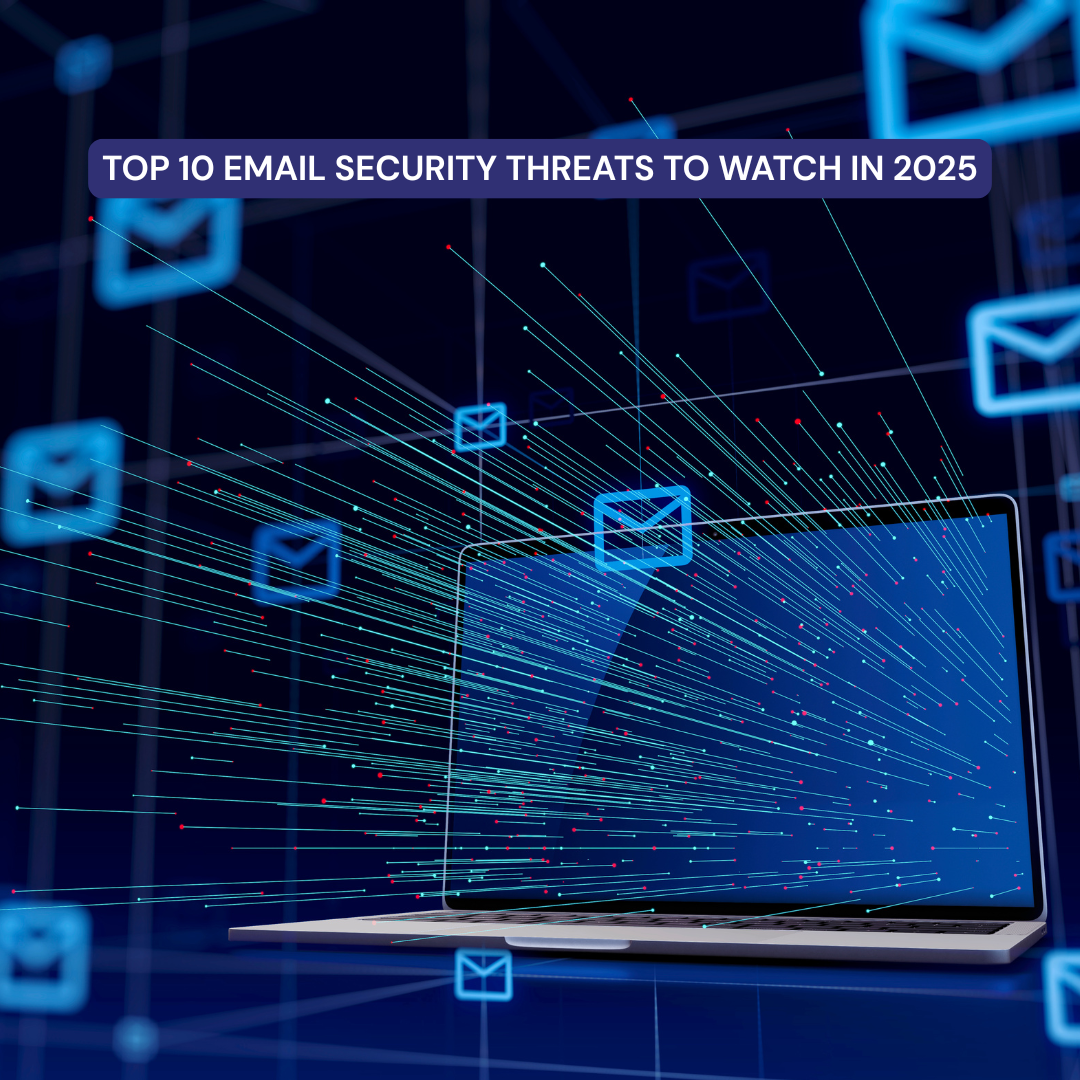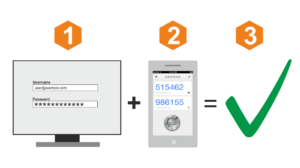Email remains a primary communication tool for businesses and a prime target for cybercriminals. From phishing scams to AI-powered attacks, email security threats are becoming more sophisticated, targeted, and damaging than ever. If you’re not evolving your defenses, you’re leaving your business exposed.
Here’s a breakdown of the top 10 email security threats to watch in 2025, plus actionable tips to help you stay ahead of cybercriminals.
1. AI-Powered Phishing Attacks
What’s happening:
Cybercriminals are now using AI tools to craft realistic, personalized phishing emails that are nearly indistinguishable from legitimate communications.
RELATED: Phishing Scams: How to Spot and Avoid Them in 2025
Why it’s dangerous:
AI-generated phishing emails can:
-
Mimic the writing styles of colleagues or bosses.
-
Avoid spam filters using dynamic language.
-
Trick even the most cautious employees.
How to beat it:
-
Train staff to identify subtle red flags in emails.
-
Use advanced anti-phishing tools with AI-detection capabilities.
-
Implement DMARC, SPF, and DKIM to authenticate emails.
2. Business Email Compromise (BEC)
What’s happening:
Hackers gain access to a legitimate business email account and impersonate executives to request fraudulent transfers or sensitive data.
RELATED: The High Cost of Business Email Compromise (BEC)
Why it’s dangerous:
-
It bypasses technical defenses, and the email comes from a real account.
-
Can lead to major financial losses.
How to beat it:
-
Enable multi-factor authentication (MFA).
-
Set up payment approval workflows.
-
Monitor for unusual login behavior or device logins.
3. Deepfake-Inspired Impersonation Emails
What’s happening:
Attackers use deepfake technology to clone voices or create fake identities, which they pair with fraudulent emails to boost credibility.
Why it’s dangerous:
-
Can manipulate employees into trusting malicious messages.
-
Targets high-value individuals in organizations.
How to beat it:
-
Use voice verification or visual confirmations for critical requests.
-
Educate staff about deepfake social engineering tactics.
-
Cross-check email requests via alternate communication channels.
4. Malicious Attachments & Fileless Malware
What’s happening:
Cybercriminals are embedding malware in file types like PDFs, ZIPs, or even inside macros of Excel files. Some attacks don’t use files at all, executing code directly from memory.
Why it’s dangerous:
-
These threats often bypass traditional antivirus tools.
-
Can lead to data theft or ransomware infections.
How to beat it:
-
Block risky file types
-
Use sandboxing to inspect attachments before delivery
-
Deploy EDR (Endpoint Detection & Response) tools for threat hunting
5. Zero-Day Exploits via Email
What’s happening:
Hackers exploit unknown vulnerabilities in email clients or file viewers, delivering malware before vendors can issue patches.
Why it’s dangerous:
-
Even updated systems may be vulnerable.
-
These attacks are highly targeted and stealthy.
How to beat it:
-
Use email security gateways with threat intelligence feeds.
-
Apply virtual patching where possible.
-
Encourage timely software updates.
6. Reply Chain Attacks
What’s happening:
Hackers infiltrate legitimate email threads and insert malicious replies, making them appear as part of an ongoing conversation.
Why it’s dangerous:
-
Victims are more likely to trust a known threat.
-
Easy to spread malware internally.
How to beat it:
-
Flag messages sent from external sources, even in reply chains.
-
Use machine learning to detect anomalies in email threads.
-
Regularly audit and secure email accounts.
7. Ransomware Delivered via Email
What’s happening:
Email remains the top method for delivering ransomware, often through attachments or phishing links.
Why it’s dangerous:
-
Encrypts critical business data.
-
Can halt operations and lead to massive ransom demands.
How to beat it:
-
Train staff not to open suspicious links or attachments.
-
Back up data regularly and securely.
-
Use anti-ransomware tools and threat isolation
8. Email Archiving Exploits
What’s happening:
Cyber attackers target email archives, especially cloud-based ones, looking for old credentials, financial records, or sensitive data.
Why it’s dangerous:
-
Archives are often less protected than live systems
-
Leaked information can be used in future attacks
How to beat it:
-
Encrypt archived emails
-
Limit access based on roles
-
Use tamper-proof, secure archiving solutions
9. QR Code Phishing (“Quishing”)
What’s happening:
Instead of links, attackers embed malicious QR codes in emails, leading to fake login pages or malware downloads when scanned.
Why it’s dangerous:
-
QR codes are hard to analyze with traditional filters.
-
Target smartphone users who may let their guard down.
How to beat it:
-
Warn staff not to scan unknown QR codes.
-
Use security tools that detect image-based threats.
-
Educate on mobile-focused phishing tactics.
10. Social Engineering & Human Error
What’s happening:
Many cyberattacks don’t rely on software exploits; they exploit people. Attackers manipulate employees into giving up access, clicking links, or sharing private data.
Why it’s dangerous:
-
Social engineering is hard to detect and very effective
-
It only takes one mistake to compromise a business
How to beat it:
-
Run regular cybersecurity awareness training.
-
Simulate phishing campaigns to test employee response.
-
Foster a security-first culture across your organization.
Protecting Your Business in 2025
Cybercriminals are evolving, and so should your defenses. As email security threats become more targeted, deceptive, and dangerous, protecting your inbox is no longer optional. To stay secure in 2025:
-
Combine technical defenses with human training
-
Use enterprise-grade email security solutions
-
Stay informed and proactive, not reactive
At MailSafi, we offer comprehensive email security solutions that protect your business from phishing, ransomware, spoofing, and more. Features include:
-
AI-powered spam and phishing detection
-
Email archiving and compliance tools
-
Secure bulk email sending
-
Real-time threat monitoring
-
Advanced filtering and data loss prevention
Reach out to us today to secure your email and stay ahead of 2025’s top email security threats.
Contact: sales@mailsafi.com
Visit: https://mailsafi.com/
![]()




